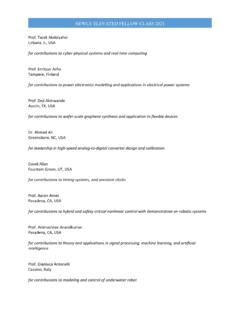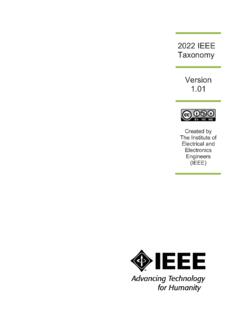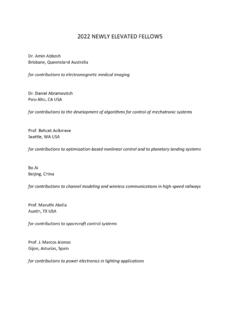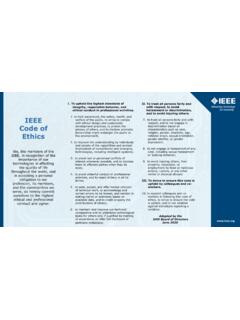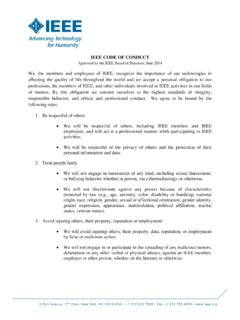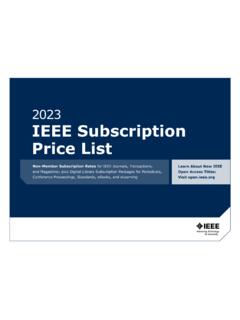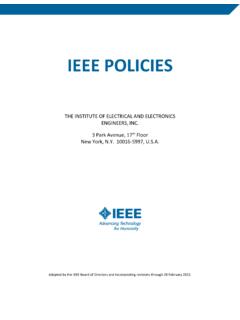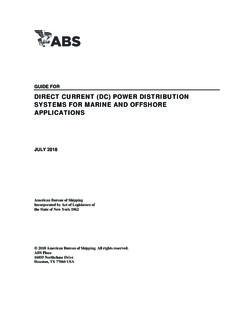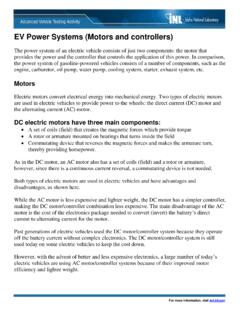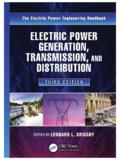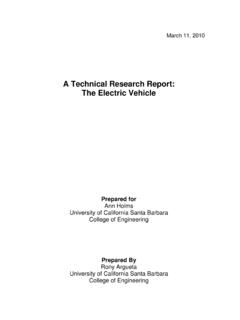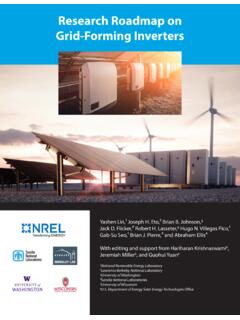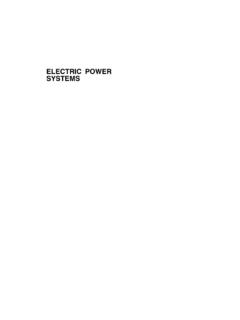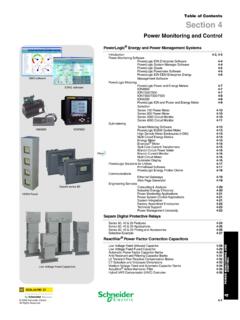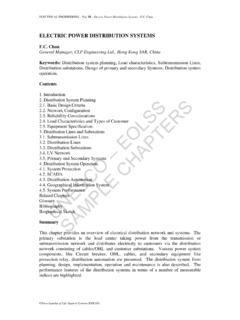Transcription of Electric Power Grid Modernization Trends, Challenges, and ...
1 Electric Power Grid Modernization Trends, Challenges, and Opportunities Michael I. Henderson, Damir Novosel, and Mariesa L. Crow November 2017. This work is licensed under a Creative Commons Attribution-NonCommercial United States License. Background The traditional Electric Power grid connected large central generating stations through a high- voltage (HV) transmission system to a distribution system that directly fed customer demand. Generating stations consisted primarily of steam stations that used fossil fuels and hydro turbines that turned high inertia turbines to produce electricity. The transmission system grew from local and regional grids into a large interconnected network that was managed by coordinated operating and planning procedures.
2 Peak demand and energy consumption grew at predictable rates, and technology evolved in a relatively well-defined operational and regulatory environment. Ove the last hundred years, there have been considerable technological advances for the bulk Power grid. The Power grid has been continually updated with new technologies including increased efficient and environmentally friendly generating sources higher voltage equipment Power electronics in the form of HV direct current (HVdc) and flexible alternating current transmission systems (FACTS). advancements in computerized monitoring, protection, control, and grid management techniques for planning, real-time operations, and maintenance methods of demand response and energy-efficient load management.
3 The rate of change in the Electric Power industry continues to accelerate annually. Drivers for Change Public policies, economics, and technological innovations are driving the rapid rate of change in the Electric Power system. The Power system advances toward the goal of supplying reliable electricity from increasingly clean and inexpensive resources. The electrical Power system has transitioned to the new two-way Power flow system with a fast rate and continues to move forward (Figure 1). 2. Figure 1. Transition from a traditional to new electrical grid with two-way Power flow. The re-regulation of Electric Power industries in the United States and elsewhere introduced wholesale Electric markets.
4 Competition shifted the risk away from rate payers to investors, reduced consumer costs, and supported rapid innovation. The advent of markets and environmental policies prompted significant changes in the fuel mix of generating stations that shifted from coal and nuclear generation to efficient natural-gas-fired combined cycle units. A tension exists between the wholesale Electric markets and public policies that subsidize, or in other ways promote, the use of renewable resources, energy efficiency, and demand response. However, the economics of these technologies have become increasingly favorable, and their applications have resulted in lower costs to consumers and greater environmental sustainability.
5 Recent developments include the advent of retail access and even distribution markets, which offer more consumer choices and business opportunities but complicate managing the Electric Power grid. Regulatory reform continues driving changes to the Electric Power industry. The regulatory revolution helped spur technological development. The Internet of Things (IoT). facilitates more customer choice that can be managed locally, remotely, or automatically and enables changes in consumer behavior and expectations. The distribution system was originally designed and built to serve peak demand and passively deliver Power through radial infrastructure.
6 Today, however, many customers are increasingly using the grid as a means to balance their own generation and demand and also as a backup supplier when their locally sourced generation is unavailable. More and more, customers are becoming prosumers and expect to deliver excess 3. generation back to the grid and be paid for it, without restrictions on their production. However, customers still expect the grid to be available to provide Power when they need it. These competing interests have dramatically changed distribution system operation. The digital revolution also manifests itself through dramatic improvements in monitoring and control equipment in the traditional Power system.
7 Additionally, innovative analysis techniques have allowed more rapid situational awareness to grid operators. Advances in material science and controls have led to new applications of Power electronics; one example of new technology is smart inverters for photovoltaic (PV) systems that can actively interact with the distribution system. Innovations in solar and wind generation and energy storage have resulted in both performance improvements and cost reductions. Increased sales as well as technological advances have reduced the pricing of solar panels. Several states in the United States, such as California and New York, and countries such as Germany, Spain, and Australia have ambitious goals for achieving high penetration levels of renewable generation and distributed energy resources (DERs) in the coming years.
8 Regulatory policies, such as net-zero metering, can be used to encourage growth in PV installations. Net-zero metering allows consumers to sell surplus Power to the grid and subsidizes the owners for installing PV panels. However, even consumers who have a net-zero footprint will often use grid Power during cloudy days and at night, still relying on the availability of the distribution grid. Unfortunately, the net-zero metering policy causes customers who do not have solar panels to subsidize those who do, since the expansion and maintenance costs of the distribution system are included in the rate base.
9 Therefore, customers who consume more electricity from the traditional grid bear a disproportionately larger share of the infrastructure costs. This effect is further exacerbated since PV panels are typically installed by consumers who are financially better off. For example, the state of Nevada, which has one of the highest solar radiation resources in the United States, has an aggressive renewable portfolio standard (RPS) of 25% renewable energy production by 2025 and incentives that are intended to favor the adoption of renewable energy. Furthermore, very competitive pricing of utility-scale solar has favored the adoption of Power purchasing agreements in Nevada to meet the RPS goals.
10 In response, Nevada has recently changed its net-energy metering program to reduce incentives for new rooftop solar projects. Conversely, Florida rejected the rooftop solar amendment that would have paid for utility infrastructure through additional fees to rooftop solar customers in their energy bills. These examples of disparate approaches to solar Power indicate a need for regulators to address how to monetize the use of the grid. Additional approaches will need to address both energy use and distribution system infrastructure costs for the continued success and growth of solar Power installations.
